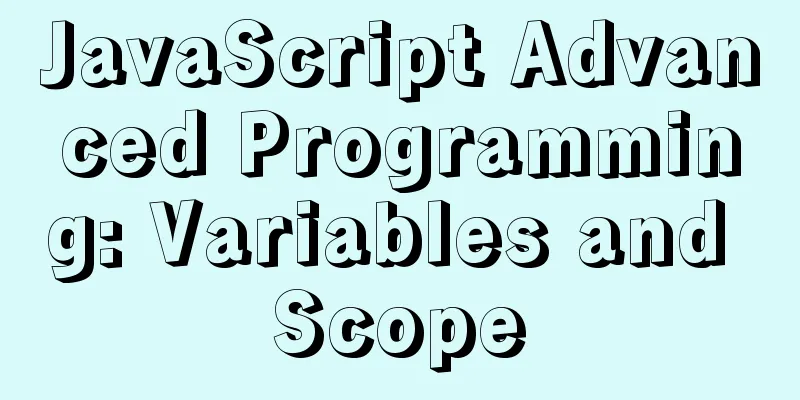JavaScript Advanced Programming: Variables and Scope

1. Original value and reference valueThe values of the six simple data types are all primitive values. When a primitive value is assigned to another variable through a variable, a new value will be copied, and the two are independent of each other. let num1 = 5 let num2 = num1
When a reference value is assigned to another variable through a variable, a value is also copied. This value is actually a pointer (reference), and the pointer still points to the same object. let obj1 = new Object() let obj2 = obj1
Since they point to the same reference object, adding properties to obj1.name = "zhangsan" console.log(obj2.name) // zhangsan When passing parameters to a function, there is only one situation where the parameters are passed by value, which is the same as assigning a variable. However, with reference values, the value passed is a pointer, but the pointer still points to the same object. 2. instanceof
console.log(1 instanceof Object) //false
let obj = new Object();
console.log(obj instanceof Object) //true
console.log(null instanceof Object) //false
function fun(){
//
}
console.log(fun instanceof Object) //true
console.log(fun instanceof Function) //true
console.log([] instanceof Object) //true
console.log([] instanceof Array) //true
3. Scope The scope of a variable is called a scope or execution context. A variable is no longer visible outside of the scope. All systems have a scope chain when searching for a variable. First, look for the variable in the closest block scope that references it. If it is not found, continue looking in the outer local scope. If it is not found again, look in the global scope. If it is not found, an error This is the end of this article about variables and scope in advanced JavaScript programming. For more information about JavaScript variables and scope, please search previous articles on 123WORDPRESS.COM or continue to browse the following related articles. I hope you will support 123WORDPRESS.COM in the future! You may also be interested in:
|
<<: TABLE tags (TAGS) detailed introduction
>>: Designing the experience: What’s on the button
Recommend
Detailed tutorial on how to publish springboot projects through docker plug-in in IDEA
1. Write the Dockerfile (1) Right-click the proje...
Example of nginx ip blacklist dynamic ban
When a website is maliciously requested, blacklis...
MySQL query syntax summary
Preface: This article mainly introduces the query...
The unreasonable MaxIdleConns of MySQL will cause short connections
1 Background Recently, some performance issues ha...
Description and use of table attributes CellPad, CellSpace and Border in web page production
cellspacing is the distance between cells in the t...
Understand CSS3 FlexBox elastic layout in 10 minutes
Basic Introduction Features Flexbox is a CSS disp...
Linux installation apache server configuration process
Prepare the bags Install Check if Apache is alrea...
Advertising skills in the Baidu Union environment (graphic tutorial)
Recently, students from the User Experience Team o...
Detailed explanation of Vue routing router
Table of contents Using routing plugins in a modu...
Mini Program to Implement Sieve Lottery
This article example shares the specific code of ...
Summary of common Mysql DDL operations
Library Management Create a library create databa...
A brief introduction to the differences between HTML and XHTML, and HTML4 and HTML5 tags
Difference between HTML and XHTML 1. XHTML elemen...
Installation and use of Ubuntu 18.04 Server version (picture and text)
1 System Installation Steps OS Version:1804 Image...
MySQL select, insert, update batch operation statement code examples
In projects, batch operation statements are often...
Installation method of mysql-8.0.17-winx64 under windows 10
1. Download from the official website and unzip h...











